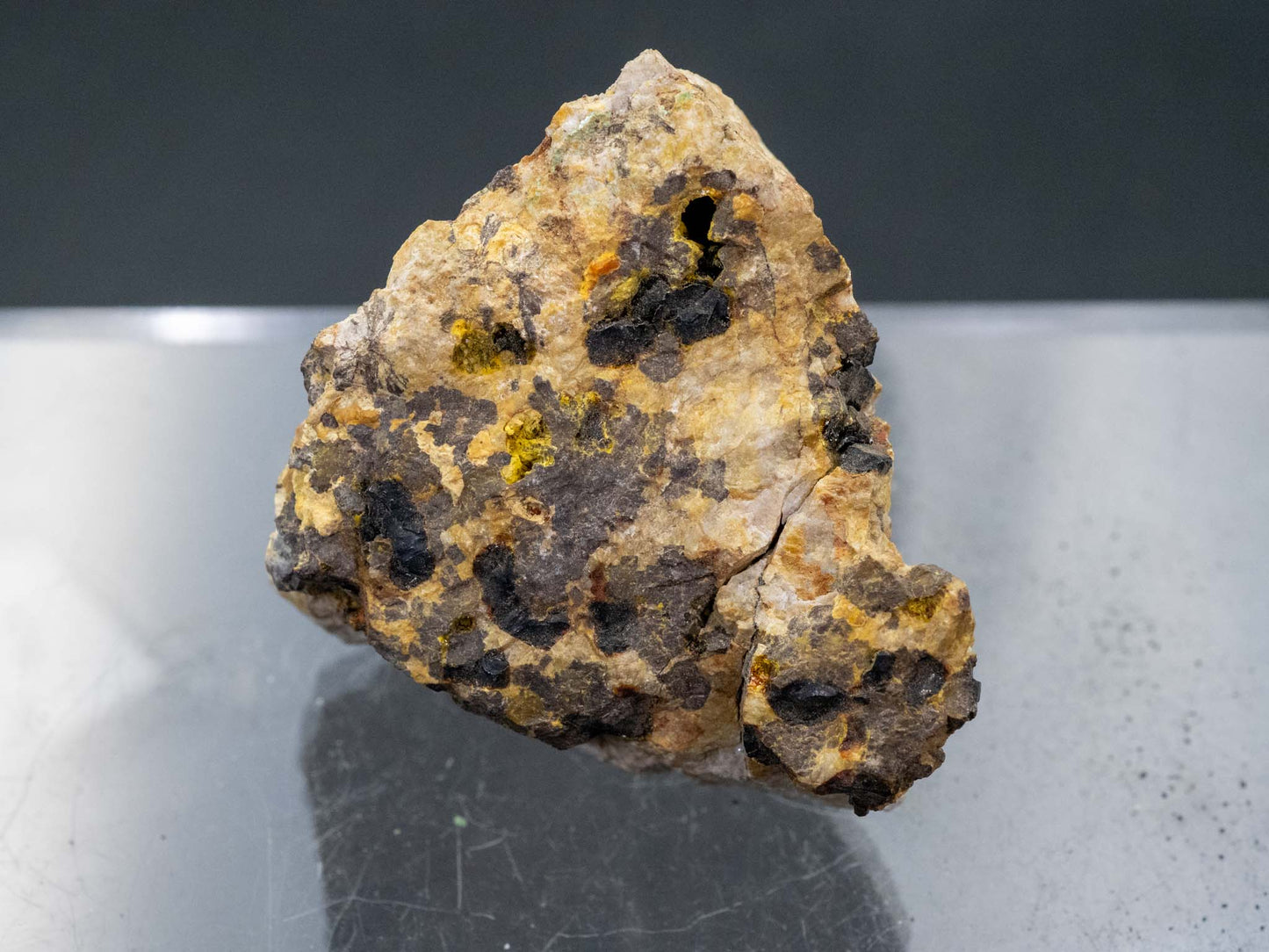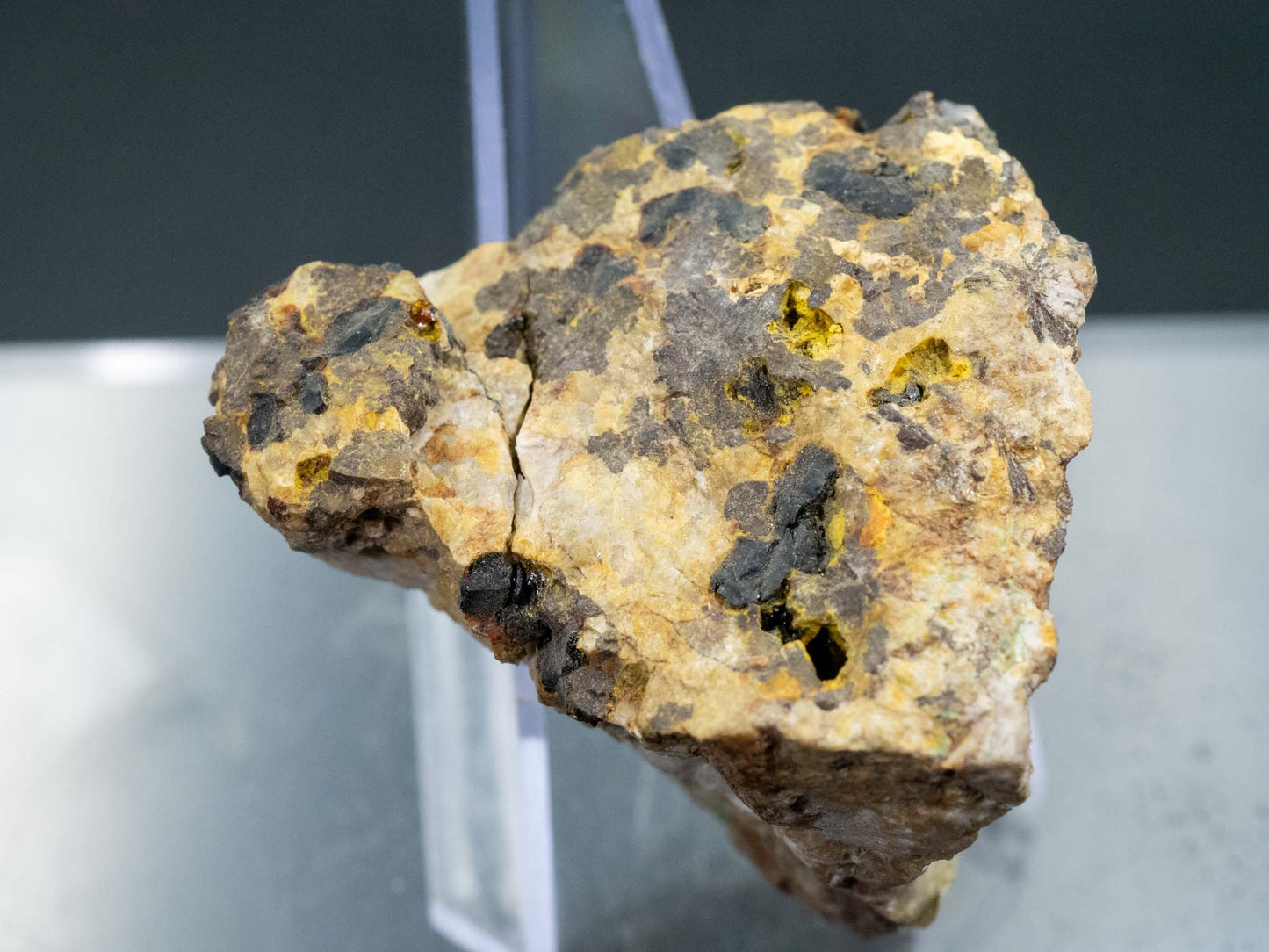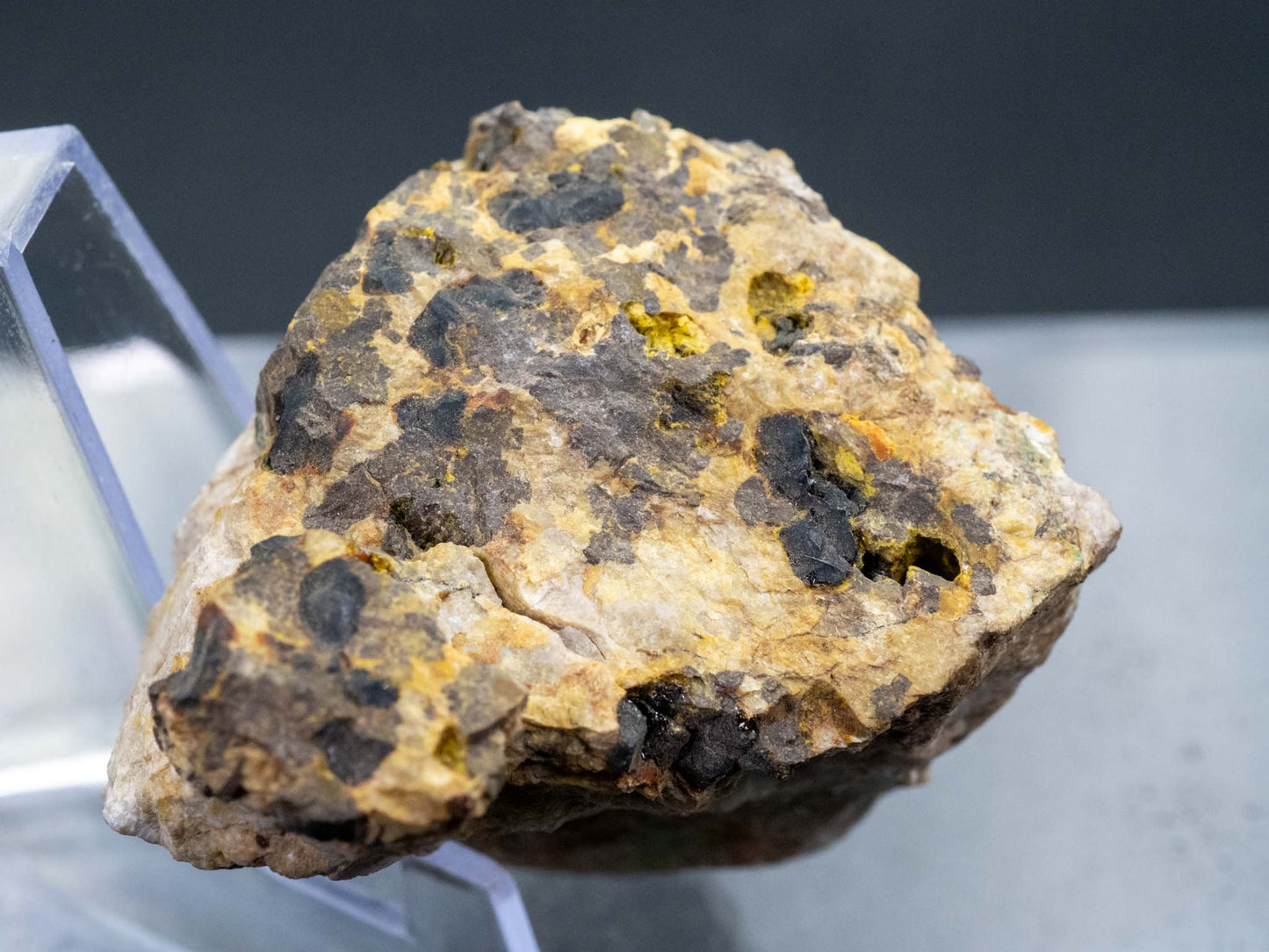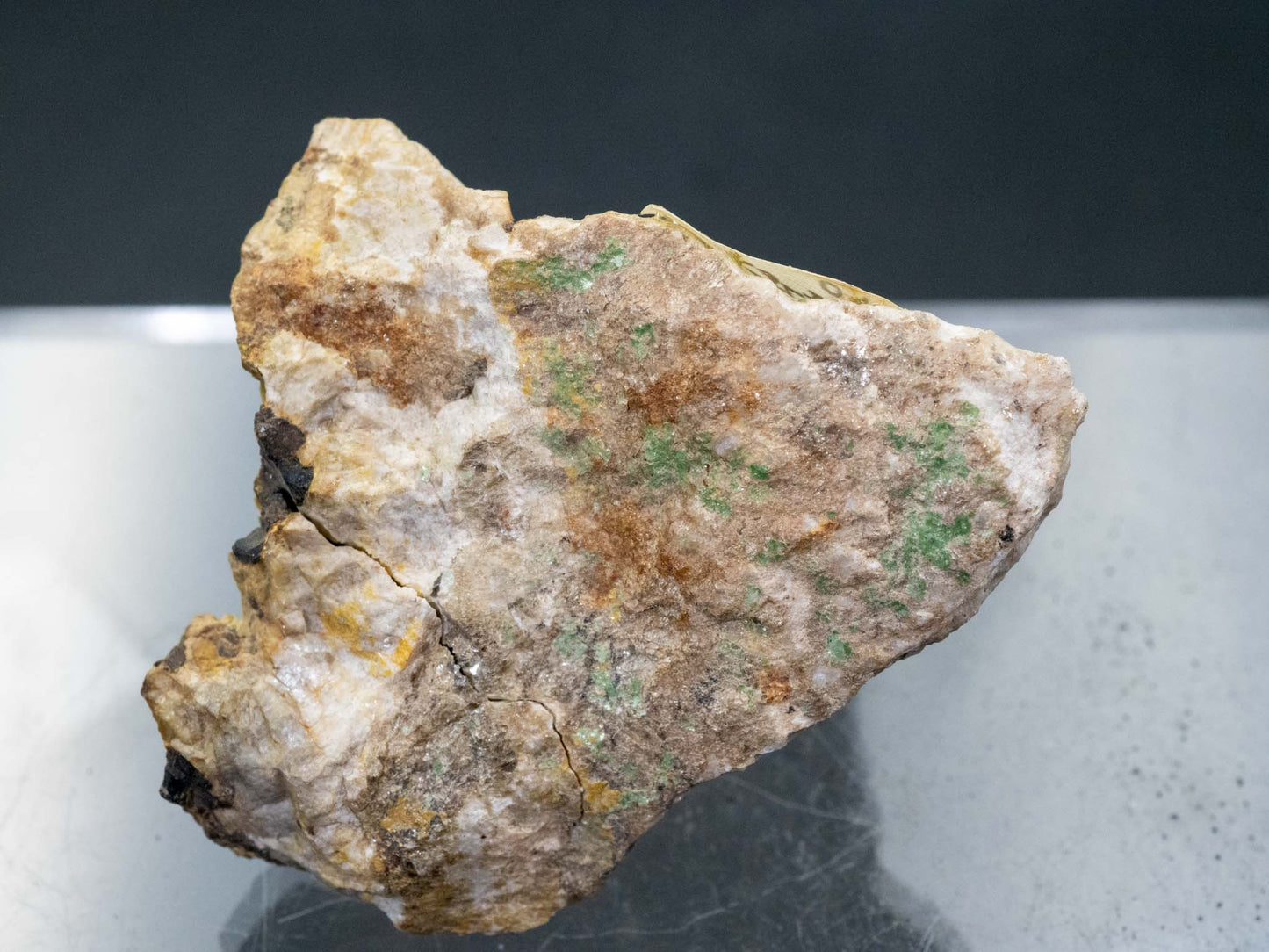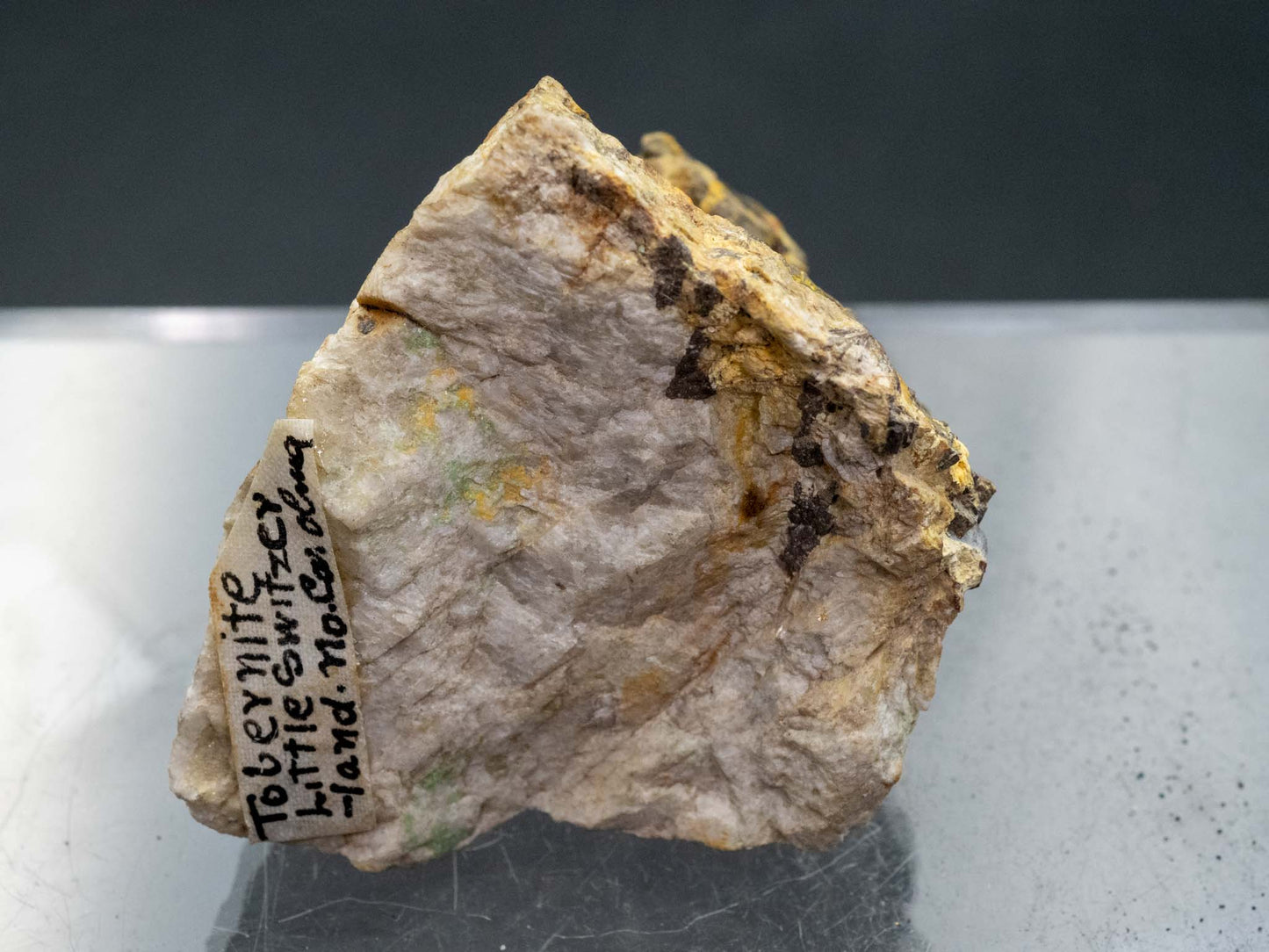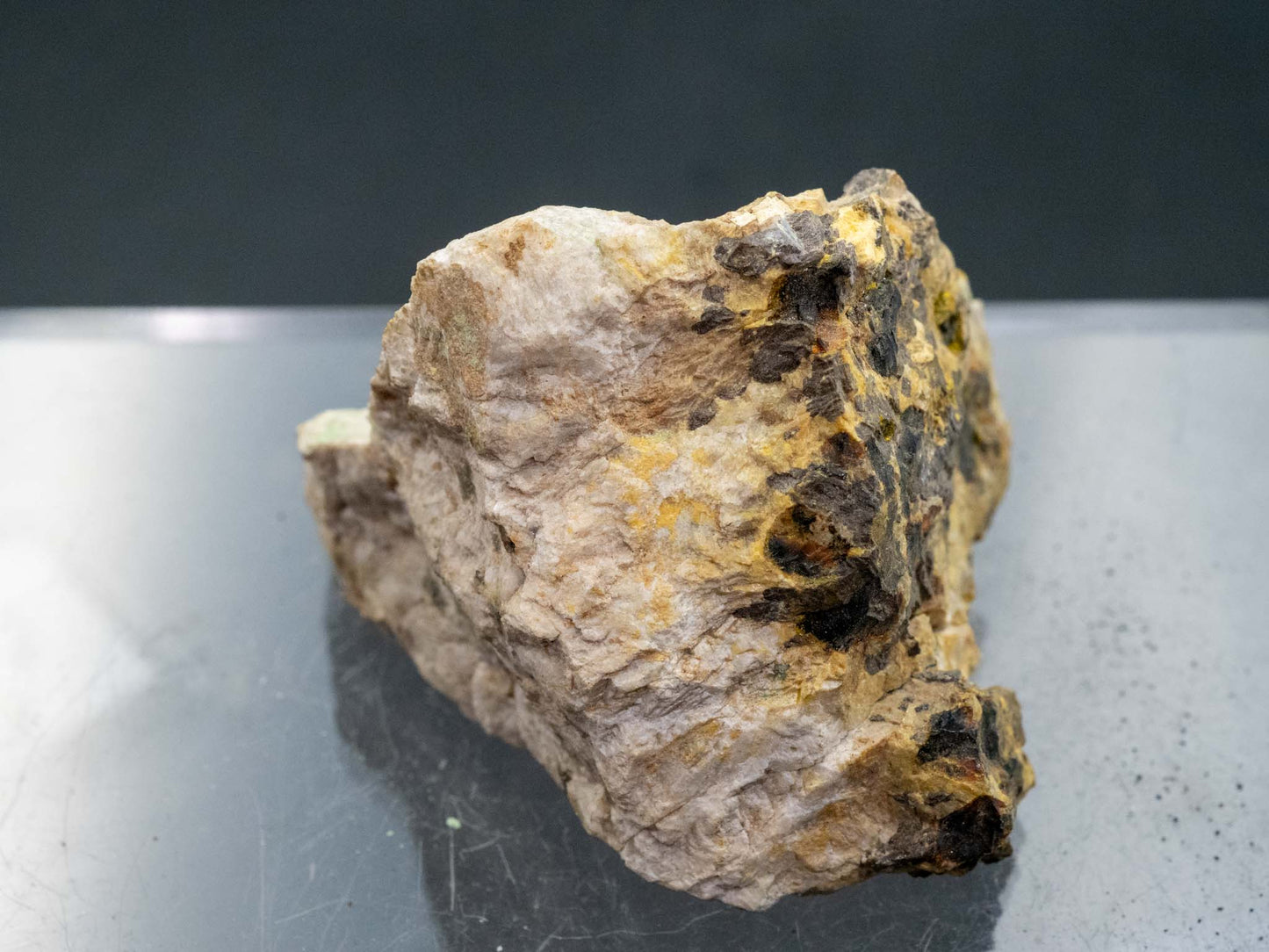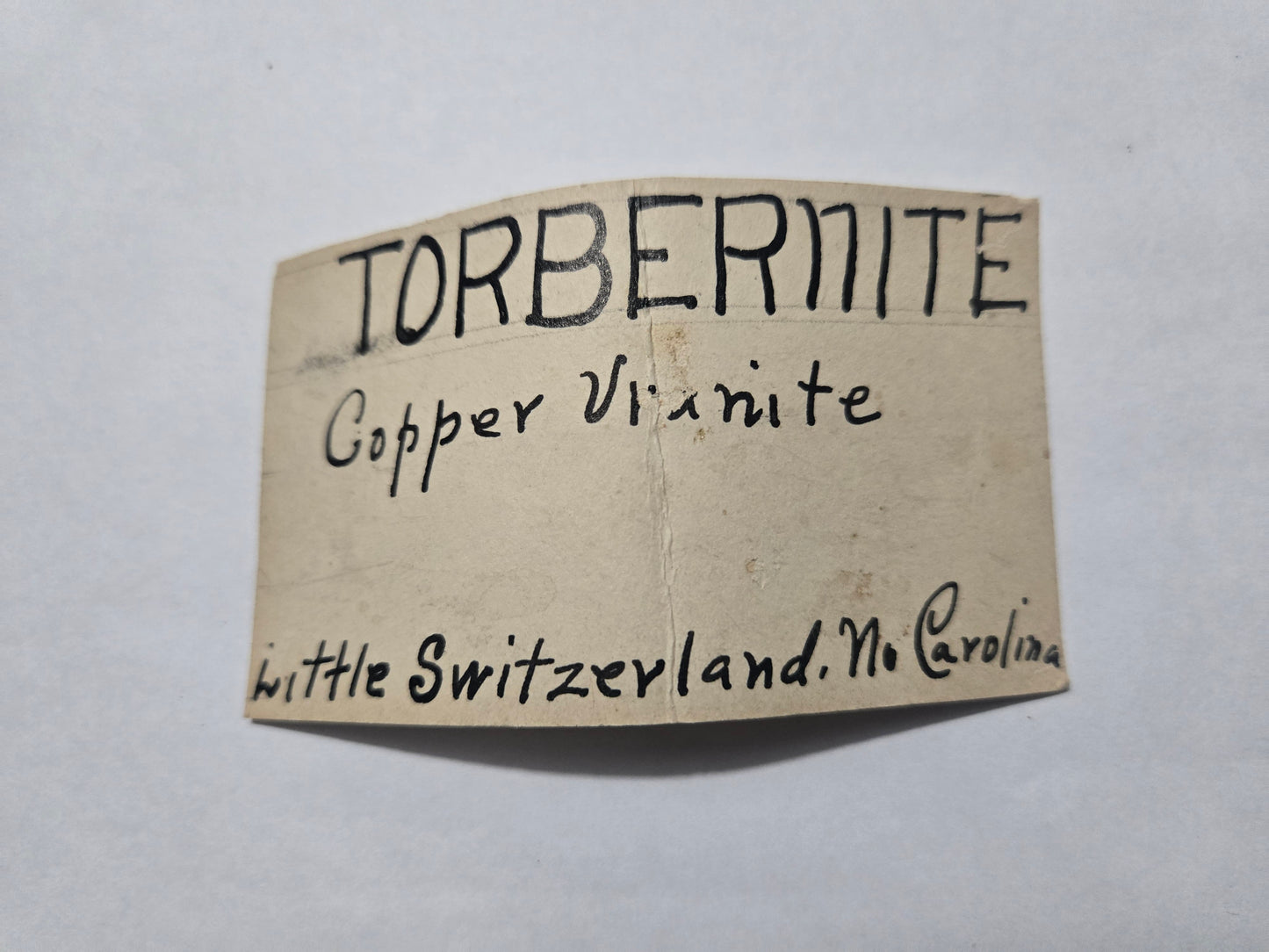Rad Man Minerals
Uraninite, Gummite & Torbernite - Little Switzerland area, North Carolina, USA
Uraninite, Gummite & Torbernite - Little Switzerland area, North Carolina, USA
Couldn't load pickup availability
 UO2 Cu(UO2)2(PO4)2 · 8H2O
UO2 Cu(UO2)2(PO4)2 · 8H2O
The Little Switzerland area of North Carolina is renowned for its pegmatite-rich geology, which has yielded fascinating mineral specimens, including uraninite, torbernite, and gummite. Uraninite, the primary ore of uranium, is found in the area as dense, black, metallic crystals. This mineral occurs within granitic pegmatites and is often associated with other rare-earth and radioactive minerals. Uraninite from Little Switzerland is valued for its historical significance in uranium mining, as well as its role in scientific studies of radioactive decay and geochronology.
Torbernite, a secondary uranium mineral, often forms as a strikingly vibrant green, tabular crystal with a micaceous appearance. It is a hydrated copper uranyl phosphate that develops through the alteration of primary uranium minerals such as uraninite. Specimens from Little Switzerland are highly prized by collectors for their vivid color and unique crystal habit. However, due to its uranium content, torbernite is considered mildly radioactive, and handling precautions are necessary to preserve both the specimen and the collector's safety.
Gummite, another secondary uranium mineral, represents a group of amorphous, weathered alteration products derived from uraninite. It often appears as a mix of orange, yellow, or reddish hues, providing a stark contrast to the darker primary ore. Gummite from the Little Switzerland region is frequently found in association with other secondary uranium minerals, forming colorful assemblages. These specimens are particularly appreciated for their aesthetic appeal and as evidence of the geochemical processes that occur in uranium-rich environments. Together, uraninite, torbernite, and gummite from Little Switzerland underscore the area's significance in mineralogy and its contribution to the understanding of uranium's geochemical behavior.
Approx. specimen size: 50mm x 43mm x 40mm
Approx. specimen activity on an SE International Ranger EXP: 137 000 cpm
